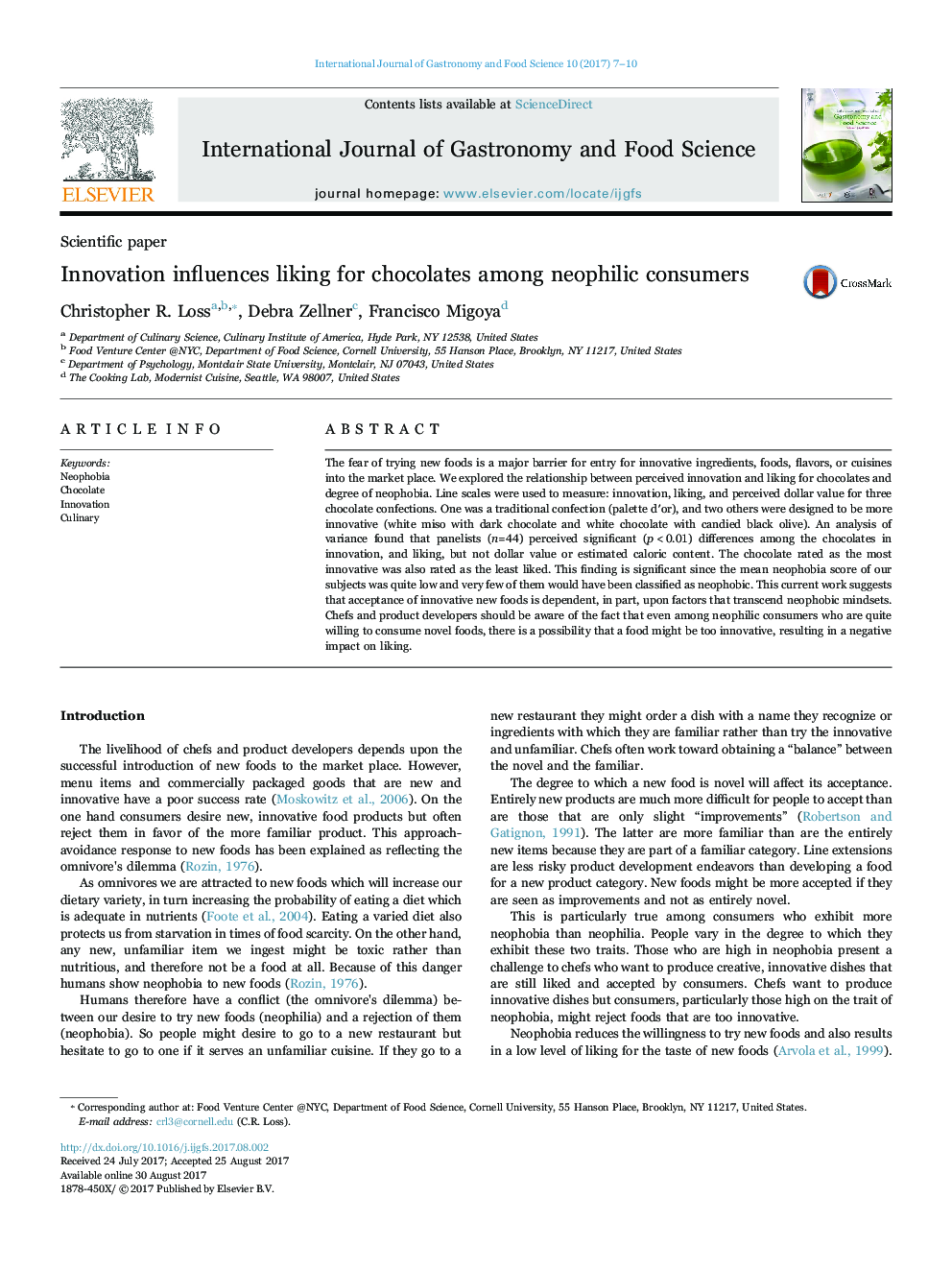| Article ID | Journal | Published Year | Pages | File Type |
|---|---|---|---|---|
| 7535002 | International Journal of Gastronomy and Food Science | 2017 | 4 Pages |
Abstract
The fear of trying new foods is a major barrier for entry for innovative ingredients, foods, flavors, or cuisines into the market place. We explored the relationship between perceived innovation and liking for chocolates and degree of neophobia. Line scales were used to measure: innovation, liking, and perceived dollar value for three chocolate confections. One was a traditional confection (palette dâ²or), and two others were designed to be more innovative (white miso with dark chocolate and white chocolate with candied black olive). An analysis of variance found that panelists (n=44) perceived significant (p<0.01) differences among the chocolates in innovation, and liking, but not dollar value or estimated caloric content. The chocolate rated as the most innovative was also rated as the least liked. This finding is significant since the mean neophobia score of our subjects was quite low and very few of them would have been classified as neophobic. This current work suggests that acceptance of innovative new foods is dependent, in part, upon factors that transcend neophobic mindsets. Chefs and product developers should be aware of the fact that even among neophilic consumers who are quite willing to consume novel foods, there is a possibility that a food might be too innovative, resulting in a negative impact on liking.
Keywords
Related Topics
Life Sciences
Agricultural and Biological Sciences
Agricultural and Biological Sciences (General)
Authors
Christopher R. Loss, Debra Zellner, Francisco Migoya,
